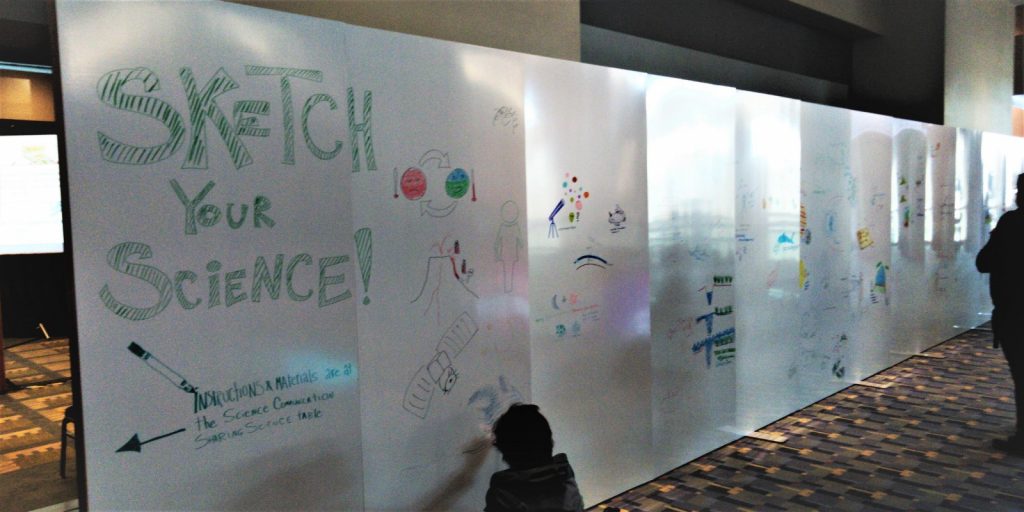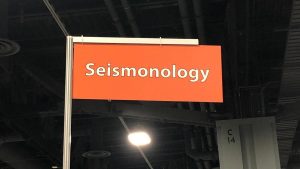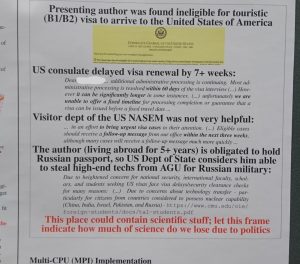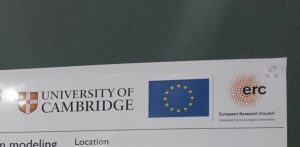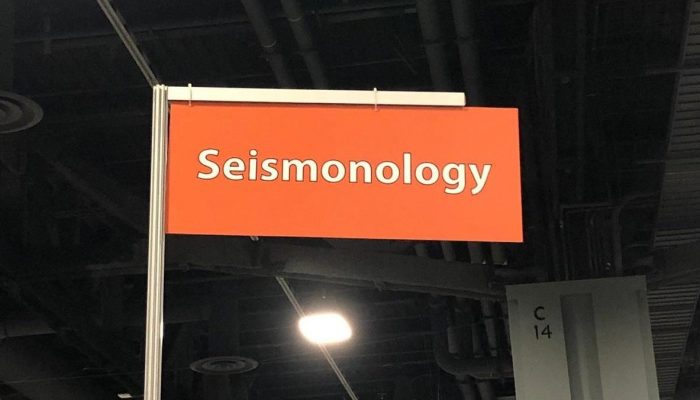
The AGU Fall Meeting: that other large geosciences meeting in the world. As every year, thousands of people burned their yearly share of carbon flying across the globe. Just like last year, the meeting was held on the East coast – but instead of balmy New Orleans, we found ourselves in somewhat chilly Washington DC. For those coming from Europe, this meant slightly less travel (as well as a slightly less gruesome jetlag) – for those coming from (East) Asia, it was probably the other way around.
And although DC is not as vast a US city as AGU’s traditional spot San Francisco (DC’s generally low architecture and building style having an oddly un-American and Old Worldy feel), the conference centre itself was spacious and well equipped for the 25 000 people it would host for the week of 10-14 December. For oral sessions, Seismology found itself mostly in the adjacent Marriott Marquis hotel, while one enormous poster hall down the basement of the conference centre (spanning multiple blocks) connected all of the geosciences, grouped together in themes ranging from the “Earth’s Interior” to “Beyond Earth”. Interestingly, seismology finds itself in every of these themes – especially with the recent addition of the lone seismometer of the Mars InSight mission.
The conference resulted in some decent workout for even the most avid armchair scholars, as we sped back and forth between the talks and posters. It is impossible to adequately summarise a five-day conference – but here are some highlights according to our envoyées Lucile, Marina and Nienke.
Lucile
“Large meetings, such as the AGU Fall meeting, are always the busiest times of the year. They remain the best occasions to share and discuss science. They always feel like a high school reunion too, as we see colleagues and friends we haven’t seen for years. This year at AGU, as usual, I bit off more than I could chew, and planned to attend too many talks and posters. However, I was impressed by the number of sessions on the interaction between aseismic/seismic behavior. For years, we had seen these two topics in different sessions. There seems to be a better consensus now that they are intrinsically linked.”
Large meetings always feel like a high school reunion…
Marina
“During AGU 2018 I had the opportunity to help the AGU ‘Sharing Science’ Program from backstage. Bridging the gap between science and society is not an easy attempt and the mission of the AGU ‘Sharing Science’ is indeed to increase knowledge on how to effectively communicate the goals and the results of research projects to broader audiences, including journalists, educators, students, policy makers, general public.
A wide range of activities was proposed by the team. Among them, the most eye-catching was definitely the ‘Sketch Your Science’ wall, where scientists were encouraged to draw pictures depicting their research. The initiative was enthusiastically welcomed by the scientific community and largely followed on social media (e.g. #sketchyourscience on Twitter). No need to mention that within a few hours, the white wall had become a jumble of colors, covered with volcanic eruptions, chemical reactions, space shuttles, bacteria, river water pollution and fault systems.”
…a jumble of colors, covered with volcanic eruptions, chemical reactions, space shuttles, bacteria, river water pollution and fault systems…
Nienke
“Perhaps the most interesting contribution that I saw was that of emeritus scientist Roger Borcherdt, who presented a theory of ray propagation in viscoelastic media. While ray theory could be considered the foundation of all of seismology, I had never before seen a demonstration of how strongly ray paths can change as a result of attenuation. In an Earth that is increasingly found to be strongly heterogeneous, I suspect that this may prove to be very relevant theory for many. The talk was based on a book which has been out since 2009 but for which a new edition was published recently that allegedly contains updated content on head waves and numerical examples (see Borcherdt, “Viscoelastic Waves in Layered Media”, Cambridge University Press, 2018).”
What else happened…
…the renaming of our research field as “Seismonology” on the first day in the poster hall – quickly removed but captured by early-bird scientists.
…the footprint of global politics in the programme, with many sessions showing withdrawn abstracts or missing presenters due to denied visas.
…and equally political, spotted on a British poster: a prominent EU flag next to the ERC logo.

